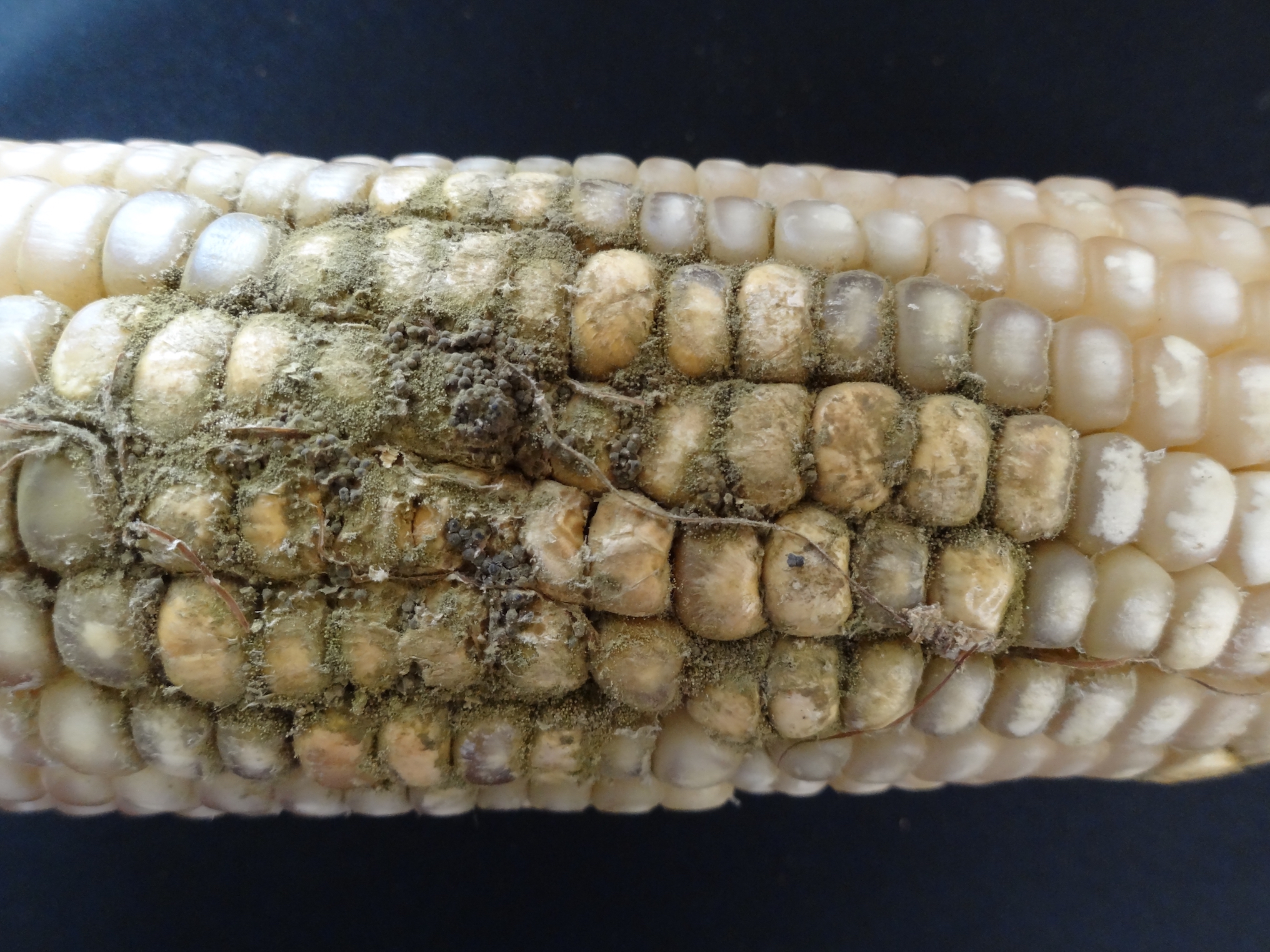August 23 2018
 Maize ear infected with Aspergillus flavus. (Photo: Maize Pathology Laboratory / CIMMYT)
Maize ear infected with Aspergillus flavus. (Photo: Maize Pathology Laboratory / CIMMYT)
A novel approach allows the detection of aflatoxin-producing fungi in maize fields. A new study explains the technique and how it was tested. “Detection of Aflatoxigenic and Atoxigenic Mexican Aspergillus Strains by the Dichlorvos–Ammonia (DV–AM) Method” was developed in collaboration between scientists from the International Maize and Wheat Improvement Center (CIMMYT), the Japanese National Agriculture and Food Organization (NARO) and Fukui University of Technology, funded in part by the CGIAR Research Program on Maize (MAIZE).
Aflatoxins are harmful compounds produced by the fungi Aspergillus flavus, which can be found in the soil, plants and grain of a variety of cereals and commodities including maize, nuts, cottonseed, spices and dried fruit. The toxic carcinogenic qualities of aflatoxins pose serious health hazards to humans and animals when contaminated crops are ingested. These health risks include cancers of the liver and gallbladder, stunted development in children, premature births and abnormal fetal development.
Not all strains of A. flavus produce aflatoxins however, so it is important to be able to detect and distinguish between A. flavus strains that are benign (atoxigenic) and those that produce dangerous toxins (aflatoxigenic). Current methods of detection are often complicated by the fact that the fungal strains display very similar physiological and molecular traits, thus a new approach is required.
In the study, a novel approach to detect and distinguish A. flavus strains was tested. Using soil samples from a CIMMYT experimental maize field in Mexico, fungal isolates were chemically treated in-line with a method recently developed in Japan, resulting in a color change indicative of toxicity. The method was found to be effective and accurate in the detection of the aflatoxigenic strains of the fungus.
This study is foundational work in the development of a simple, cost-effective and efficient method of detecting aflatoxigenic strains of A. flavus, which will help inform growers about the potential aflatoxin contamination of their crops. This is of particular importance in the developing world, where the resources for effective control of the fungus are often lacking.
To read the original study, “Detection of Aflatoxigenic and Atoxigenic Mexican Aspergillus Strains by the Dichlorvos–Ammonia (DV–AM) Method”, please click here.
Original citation: Kushiro, M.; Hatabayashi, H.; Yabe, K.; Loladze, A. Detection of Aflatoxigenic and Atoxigenic Mexican Aspergillus Strains by the Dichlorvos–Ammonia (DV–AM) Method. Toxins 2018, 10, 263.
This article was originally published on the website of the CGIAR Research Program on Maize.